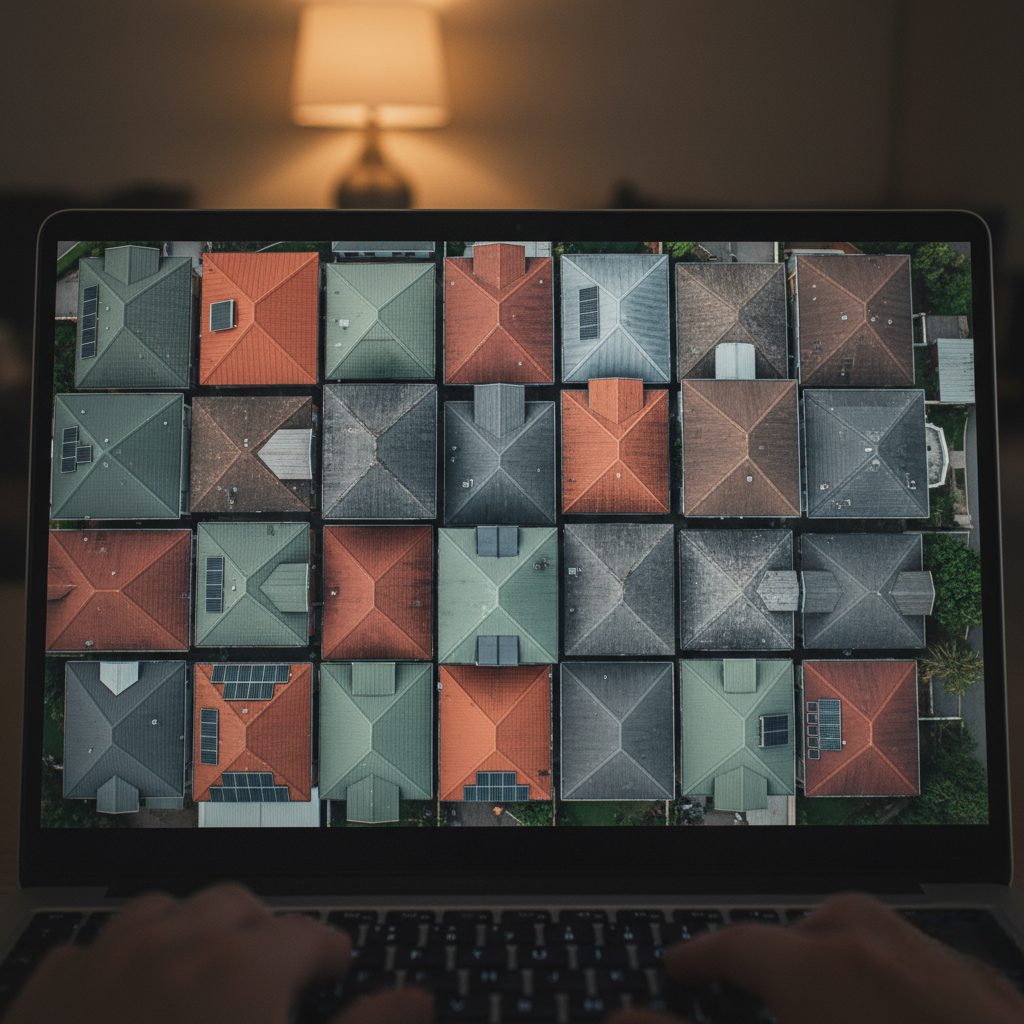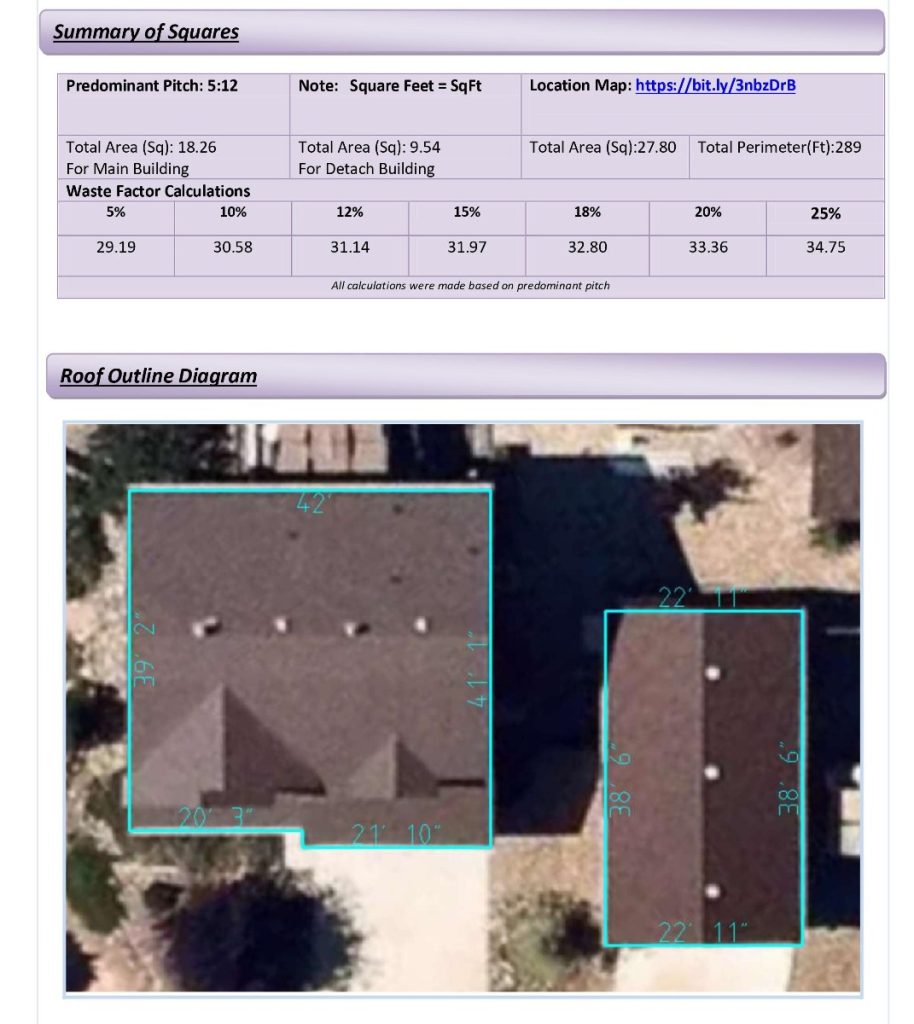Understanding roof squares is one of the most important skills that every roofer should understand. Regardless of whether you’re estimating roofing materials, creating a bid, or ordering products, knowledge of roof squares equals precision, saves costs, and creates trust with a professional audience. In this extensive article, we will explain everything you need to know about roof squares and also empower the roofer community with five tips to streamline the estimating process and increase profitability.
Table of Contents
What Is a Roof Square?
In the roofing industry, a roof square is a standardized measurement used for simplification in calculating the required quantity of roofing materials. A roof square is equal to 100 square feet of roof surface area. So, if a roof is 2,000 square feet, you have 20 roof squares.
The use of standard units allows roofers, manufacturers, and suppliers to communicate clearly. Most roofing products, such as shingles, underlayment and other roofing materials, are packaged and sold by the square to make it easier to estimate and order the right amount of roofing materials and minimize waste.
Why Understanding Roof Squares Is Important for Roofers
Precise calculations of roof squares impact all facets of roofing installation or repair—from estimating labor, to ordering materials, to entering competitive bids. A simple miscalculation can mean going over-budget, not having enough materials, or ultimately affecting client satisfaction.
By getting comfortable with the idea of roof squares, roofers are able to:
- More efficiently estimate materials, therefore saving money on material waste
- Bid more accurately to clients
- Improve profit margins
- Build trust with homeowners and contractors
How to Calculate Roof Squares Step-by-Step

Step 1: Collect the Measurement of the Roof Dimensions
Measure the length and width of each section of your roof in feets and multiply those two figures in order to obtain roof area in square feet. If there are multiple areas of roof, then measure each roof section separately and add each area together.
Example: If one section of roof is 30 ft by 20 ft then the area is:
30 x 20 = 600 square feet
Step 2: Calculate the Roof Area in Squares
When you’ve found the total roof square footage, now you’ll have to measure it in squares (A square is 100 square feet). So now you will have to divide the total by 100.
Example:
If the total area is 2,400 square feet then:
2,400 ÷ 100 = 24 squares
Step 3: Adjust for Roof Pitch
The steeper the roof, the larger the surface area becomes. To account for pitch, multiply the roof’s base area by a pitch multiplier.
| Roof Pitch | Pitch Multiplier |
|---|---|
| 4/12 | 1.06 |
| 6/12 | 1.12 |
| 8/12 | 1.20 |
| 10/12 | 1.30 |
| 12/12 | 1.41 |
Example:
If your roof base is 2,000 square feet with a 6/12 pitch, multiply by 1.12:
2,000 x 1.12 = 2,240 square feet = 22.4 roof squares
Step 4: Add Extra for Waste
A waste factor of 10-15% should always be included based on the complexity of the roof. Valleys, hips, and gables will have more cutting and trimming and will need more material.
Example:
22.4 squares + 10% waste = 24.6 squares, rounded to 25.
5 Powerful Tips to Master Roof Squares for Roofing Success
Tip 1: Take Advantage of Aerial Roof Measurement Devices
There are roof measuring services today that let roofers pinpoint measurements without ever ascending the ladder. Aerial roof measurement reports (e.g. from AerialEstimation.com) analyze information from satellite imaging to offer precise measurements in roofing squares. Measuring with this method saves time, improves accuracy, and mitigates risk.
Tip 2: Always Confirm Roof Pitch Before Placing an Order for Materials.
The pitch of the roof affects area, but it also affects what materials you need. Steeper roofs will require more shingles and different safety equipment. Confirm that you have the correct pitch measurements before placing your orders with a digital pitch finder or a smartphone app.
Tip 3: Include Roof Complexity in Your Measurements
Gable roofs are easy to measure, while those with multiple valleys, dormers, or multiple roofs (i.e., roof designs which are all connected) are complicated. To facilitate measurement of a complex roof, it is best to break the surface into smaller segments, measure each section for area, and sum those areas to calculate total roof squares.
Tip 4: Utilize Professional Estimation Software
Roofing estimation software can automate the calculations of roof squares and generate formal documents in minutes. The roofing estimation tool allows integration with many suppliers’ databases so estimators can promptly establish materials, quantities, and costs in seconds.
Tip 5: Incorporate Material Overlaps and Manufacturer Suggestions
As stated above, each manufacturer will have their installation procedure that is unique to the roofing shingles, underlayment or other materials. Some products may even specifically require overlap that does add material usage per square feet. Always check the manufacturer’s coverage chart to determine if your estimate matches their coverage recommendations.
Common Mistakes Roofers Make When Calculating Roof Squares
- Disregarding Roof Pitch: Failing to make an adjustment for roof pitch will significantly underestimate your total material use.
- No Waste Factor: If there is no waste factored in, you may run into a shortage of materials during your project.
- Early Rounding: Rounding measurements too early can reduce accuracy.
- Not Considering Roof Features: Any skylights, chimneys, vents, etc must come off your total roof area.
- Over-Ordering: Adding waste is one thing, but far too much adds unnecessary cost.
Example: Calculating Roof Squares for a Gable Roof
A gable roof measures 40 feet long and 25 feet wide on each side, with a 6/12 pitch.
- Area of one side: 40 x 25 = 1,000 sq. ft.
- Two sides: 1,000 x 2 = 2,000 sq. ft.
- Apply pitch multiplier (1.12): 2,000 x 1.12 = 2,240 sq. ft.
- Add 10% waste: 2,240 x 1.10 = 2,464 sq. ft.
- Divide by 100: 2,464 ÷ 100 = 24.64 roof squares
Round up to 25 roof squares. That’s your accurate estimate!
Final Thoughts
Every roofer who values accuracy, efficiency, and profitability should be competent in roof square measurements. Understanding what roof squares are and utilizing modern technology to take the guesswork out of it will help you secure more bids and complete jobs confidently.
Don’t forget: accuracy is profit. Take time to learn roof square measuring and use aerial and ai tech to take your roofing business to the next level.
FAQs
1. What does roofing terminology mean in terms of a roof square?
A roof square is a unit of measurement that is equal to a 100 square foot area of roof. The roofing industry uses this unit of measurement so that means of estimating materials, such as shingles, underlayment, roofing felt can be done more efficiently and accurately.
2. How does someone calculate roof squares on a house?
To explain the calculation of roof squares, you first need to measure the length and width of each section of the roof in feet. Then you multiply the two measurements to determine the square footage of that section, then divide that number by 100 to determine how many squares are in each section of the roof. Also take into consideration the roof pitch and add 10-15% for waste from cutting or overlaps.
3.Why does roof pitch matter when calculating roof squares?
Roof pitch matters in roofing simply because the pitch adds surface area to the roof. The steeper the pitch, compared to a flat roof with the same floor square footage, the more roof area there will be and vice versa. Thus it is important to factor in pitch when calculating roofing because it can affect the total roof squares of material needed.
4. How many bundles of shingles will my roofing square require?
Most common shingles use approximately three bundles per roofing square. Some premium or architectural shingles use more than three bundles. It is always best to check the specific shingles manufacturer coverage chart before buying product.
5. Can I use aerial measurements versus manually measuring my roof?
Yes. Aerial measurements will usually have a better accuracy than manually measuring. Aerial roof measurement tools, like AerialEstimation.com, will provide an accurate digital roof report using aerial satellite measurements. Aerial estimates provide time savings, increase accuracy, and reduce risk of on-site measuring error.


